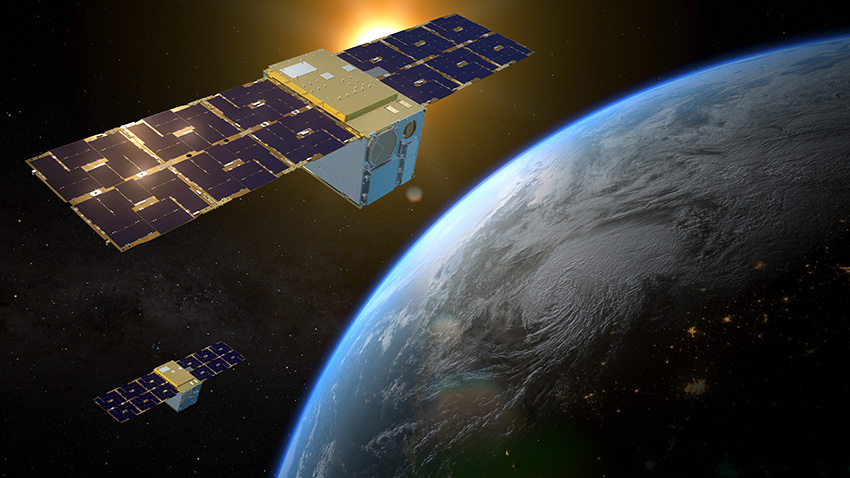Lockheed Martin’s Pony Express 2 Tech Demo Satellites Declared Ready for Launch
Company-Funded Dual Space Vehicles Will Demonstrate How CJADC2 Can Be Enhanced from Space
Littleton, Colo., February 15. The Lockheed Martin Pony Express 2 mission, intended to showcase how space can enhance Combined Joint All-Domain Command and Control (CJADC2), is ready for launch.

Pony Express 2 is a self-funded technology demonstration that uses a pair of small satellites. Its mission integrates four Lockheed Martin payloads on two 12U Terran Orbital Renegade-class space vehicles. The payloads provide a tactical communications system; a Ka-band crosslink and mesh network; precision relative ranging and time synchronization across the satellites; and a high-end CPU/processor.
Once on orbit, Pony Express 2 will demonstrate:
- Enhanced connectivity: NASA-standard delay-tolerant, mesh networking to show how warfighters could remain connected by data that is resiliently-relayed through a constellation of satellites for direct to users at the tactical edge.
- Autonomous capability: With HiveStarTM, a “bid-auction” style autonomous mission technology, there will be a significantly reduced need for satellite operator inputs, an increase in resiliency and faster decision-making. HiveStar technology is a scheduling resource that distributes mission tasks based on availability of the space assets.
- Mission flexibility: The company’s SmartSatTM technology onboard Pony Express 2 allows applications written in almost any software language to be uploaded to an orbiting spacecraft. Similar to an app on a smart phone, this enables edge processing for software-defined missions.
- Agile operations: The mission features formation flight algorithms to enable the spacecraft to maintain a tight formation (within a couple of kilometers), using more efficient ion propulsion not normally used for such cooperative operations.
- AI-enabled proactive troubleshooting: The Artificial Intelligence (AI) application will autonomously monitor spacecraft telemetry and, with the ability to predict potential failures faster than humans, and allow controllers to proactively address issues before they occur
Pony Express 2 will launch on SpaceX’s Transporter-10 rideshare mission no earlier than March 2024. After a series of on-orbit demonstrations by Lockheed Martin, Pony Express 2 is expected to be available to participate in government exercises later this year.
“The Pony Express 2 mission will showcase how we can keep our warfighters connected from space across every domain even in the most austere and contested environments,” said Maria Demaree, Vice President and General Manager for Lockheed Martin National Security Space. “These technologies will be key to ensuring information superiority and 21st Century Security for our forces and allies.”
Pony Express 2 will eventually be joined by other satellites launched later to form Lockheed Martin’s Space-Augmented Joint All-Domain Operations Environment (SAJE), which will show how space can fully enable and lead the Department of Defense’s CJADC2 vision.
Pony Express 2 is the latest mission in a collection of Lockheed Martin self-funded technology demonstrators launched by the company to showcase technology maturity, including its Electronically Steerable Antenna (ESA) Payload, LM LINUSS™ and Pony Express 1.





